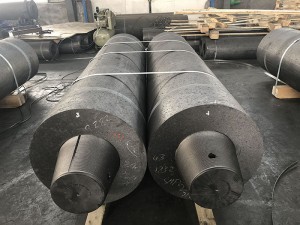Resistivity and electrode consumption. The reason is that temperature is one of the main factors affecting the oxidation rate. When the current is the same, the higher the resistivity and the higher the electrode temperature, the faster the oxidation will be.
The graphitization degree of electrode and electrode consumption. The electrode has high graphitization degree, good oxidation resistance and low electrode consumption.
Volume density and electrode consumption. The mechanical strength, elastic modulus and thermal conductivity of graphite electrode increase with the increase of bulk density, while the resistivity and porosity decrease with the increase of bulk density.
Mechanical strength and electrode consumption. The graphite electrode not only bears self weight and external force, but also bears tangential, axial and radial thermal stresses. When the thermal stress exceeds the mechanical strength of the electrode, the tangential stress will make the electrode produce longitudinal striations, and in serious cases, the electrode will fall off or break. Generally, with the increase of compressive strength, the thermal stress resistance is strong, so the electrode consumption decreases. But when the compressive strength is too high, the coefficient of thermal expansion will increase.
Joint quality and electrode consumption. The weak link of the electrode is easier to be damaged than the electrode body. The damage forms include electrode wire fracture, joint middle fracture and joint loosening and falling off. In addition to the insufficient mechanical strength, there may be the following reasons: the electrode and the joint are not closely connected, the thermal expansion coefficient of the electrode and the joint does not match.
Graphite electrode manufacturers in the world have summarized and tested the relationship between electrode consumption and electrode quality, and reached such a conclusion.
Post time: Jan-08-2021

